no holiday is forever
with Adam and Hannah Bateman, Amra Causevic, Ben Dowell, Siera Hyte, Sara Ludy, Shana Moulton, Thomas Macker, Andrea McGinty, Anoushe Shojae-Chaghorvand, Trang Tran and Chang Sujung, Chen Chen & Kai Williams, Ellen Pong, Imaan Saatr, Isabel Rower, LIPS, Max Lamb, Walter Mingledorff
5.1.2021 - 7.18.2021





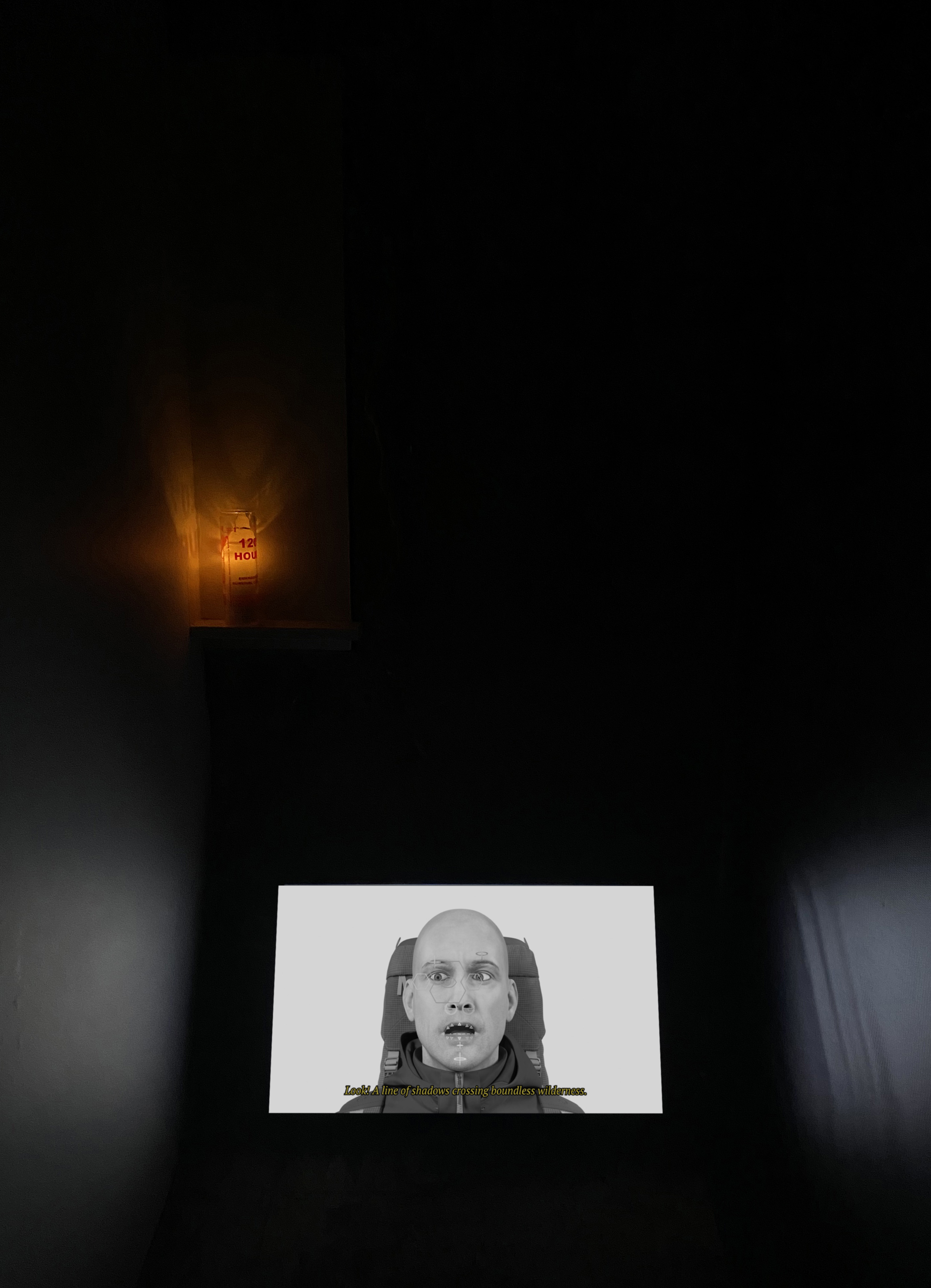 Andy Kincaid, Dream home. A new migration [installation view], 2021
Andy Kincaid, Dream home. A new migration [installation view], 2021video, 2:34
 Shana Moulton, Moonbirth [installation view], 2021
Shana Moulton, Moonbirth [installation view], 2021video, 6:11
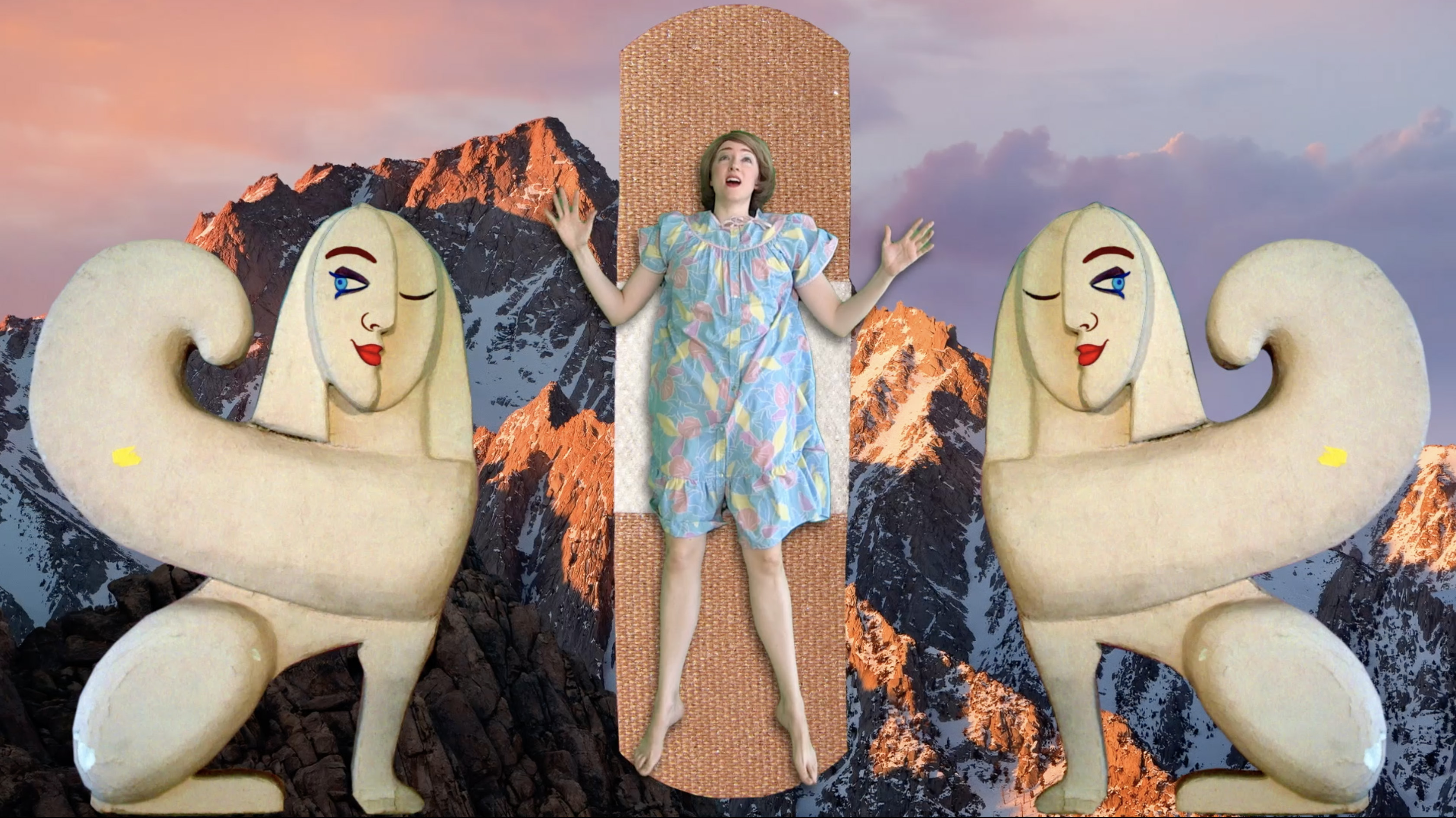
Shana Moulton, Upgrade, 2021
video, 6:32
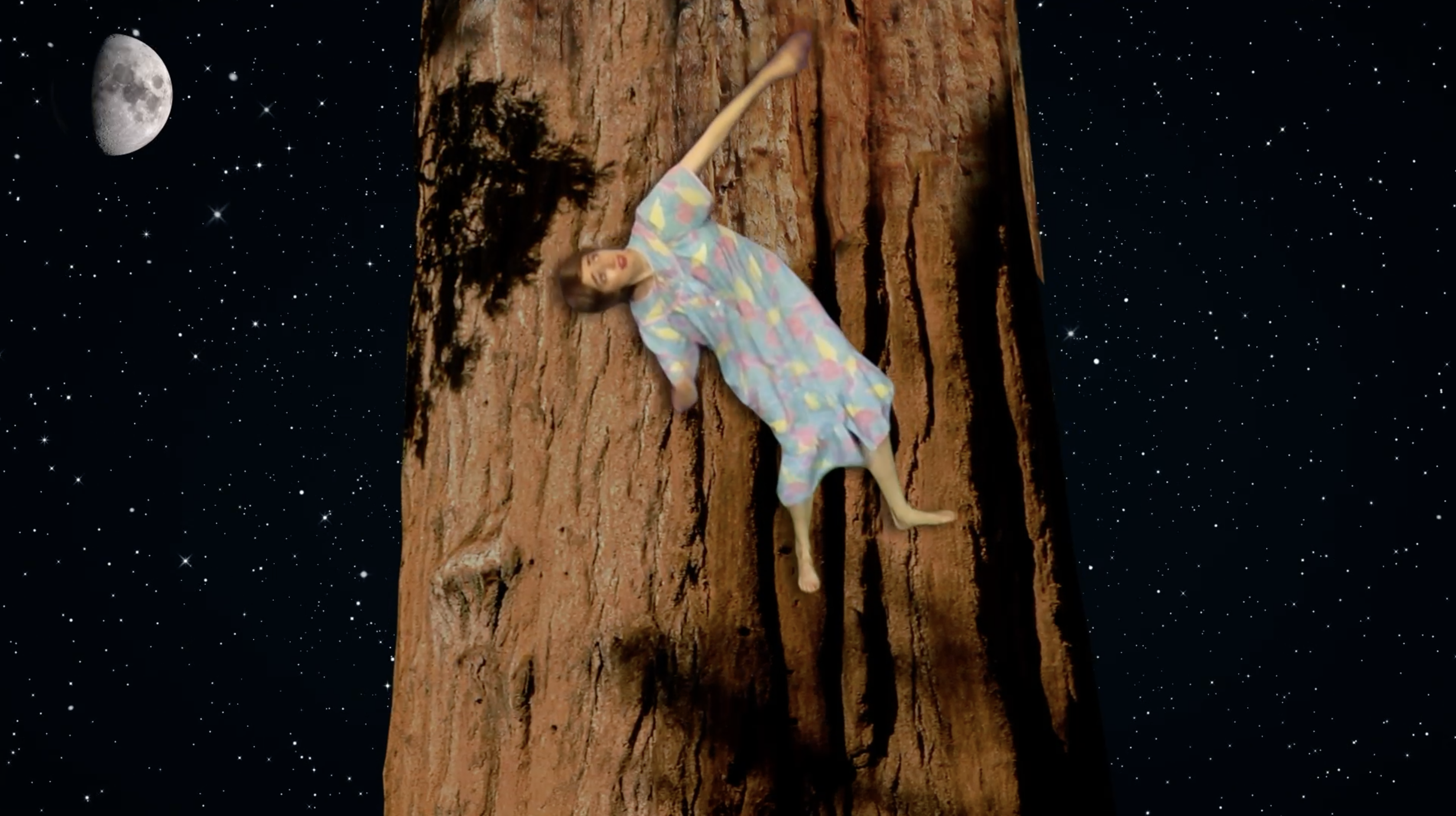 Shana Moulton, Treefall, 2021
Shana Moulton, Treefall, 2021video, 6:24
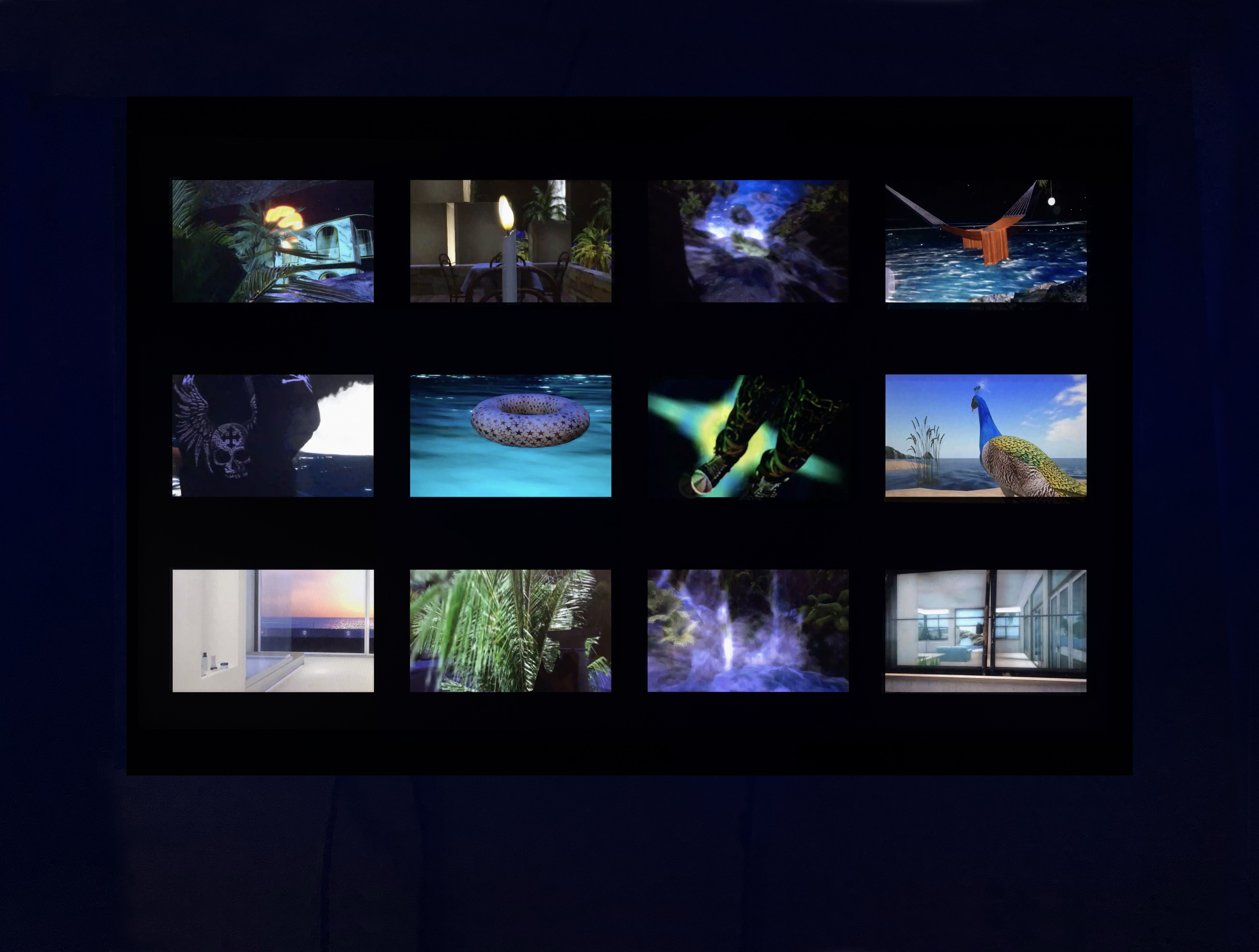 Sara Ludy, Beaches [installation view], 2021
Sara Ludy, Beaches [installation view], 2021video, 2:00

Siera Hyte, 5waystolocateyourbodybeforesleep, 2021
video, 4:58
 Adam Bateman, walk west, 2021
Adam Bateman, walk west, 2021video, 13:22

Andy Kincaid, [installation view of vestibule for Dream Homes. Beginning I-IV], 2021
Drywall, steel doors, light, rabbit foot, copper photogravure plates, ink, cherry, acrylic
 Andy Kincaid, Dream home. Beginnings I - IV, 2021
Andy Kincaid, Dream home. Beginnings I - IV, 2021Copper photogravure printing plate, ink, cherry, acrylic



 Andy Kincaid, Dream home. Luck wall $$$ (home), 2021
Andy Kincaid, Dream home. Luck wall $$$ (home), 2021Inkjet on billboard vinyl, ladder, paint, arcosanti chime, resor chime, small chime, snake, eBay horseshoe, Fenn’s treasure, horseshoe, silicone, dirt, marshmallow, Christmas wagon, atlas moth, rabbits foot



Thomas Macker, Woodcutter, Franz Marc, 1911, 2012
type C print

Thomas Macker, Der Holzfäller, Ferdinand Hodler, 1910, 2012
type C print
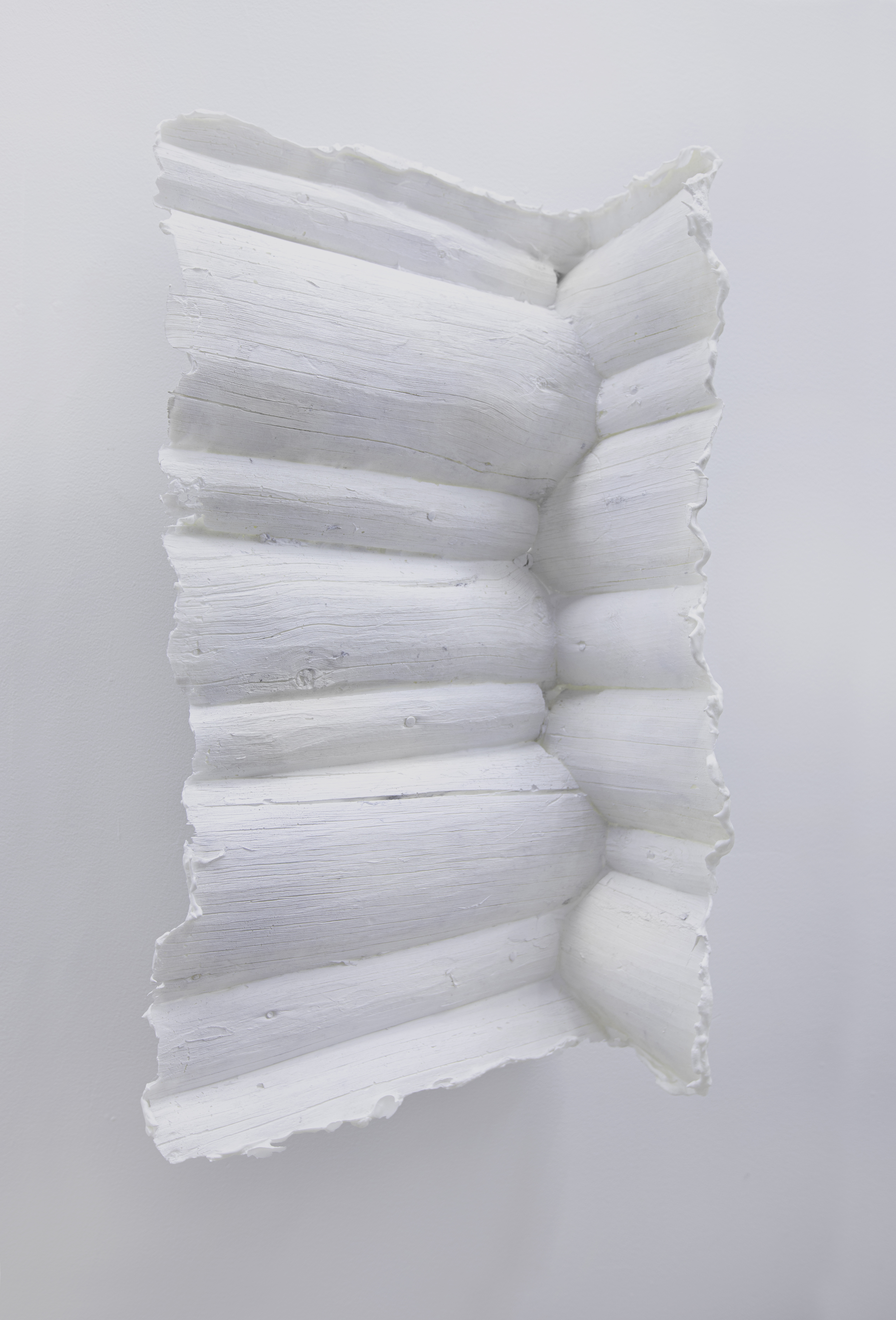 Andy Kincaid, Dreamhome. My wall, 2021
Andy Kincaid, Dreamhome. My wall, 2021urethane plastic, paint

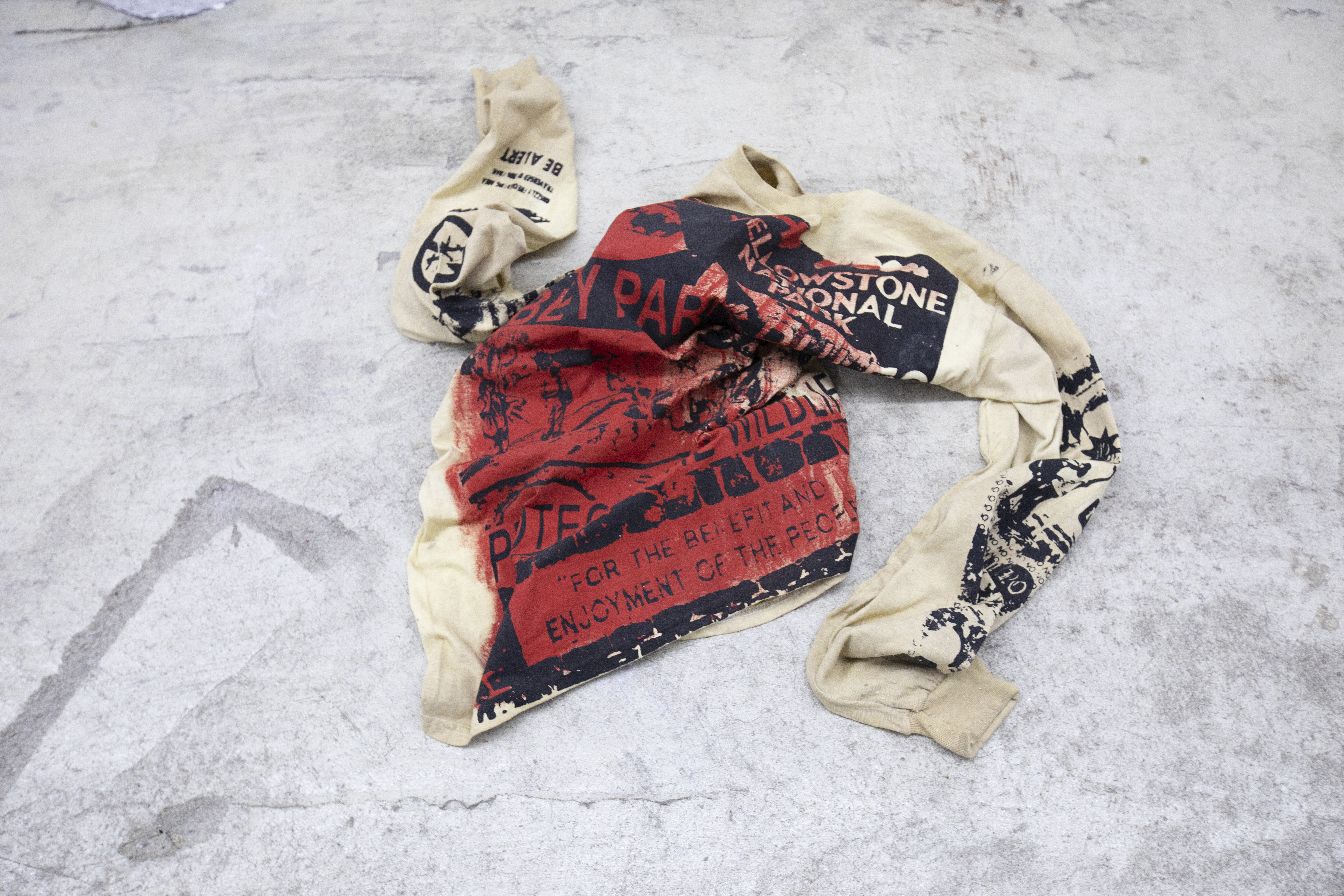 Anoushe’ Shojae-Chaghorvand, BAD BEHAVIOR, 2021
Anoushe’ Shojae-Chaghorvand, BAD BEHAVIOR, 2021 acrylic silkscreen ink, cotton shirt, RIT dye
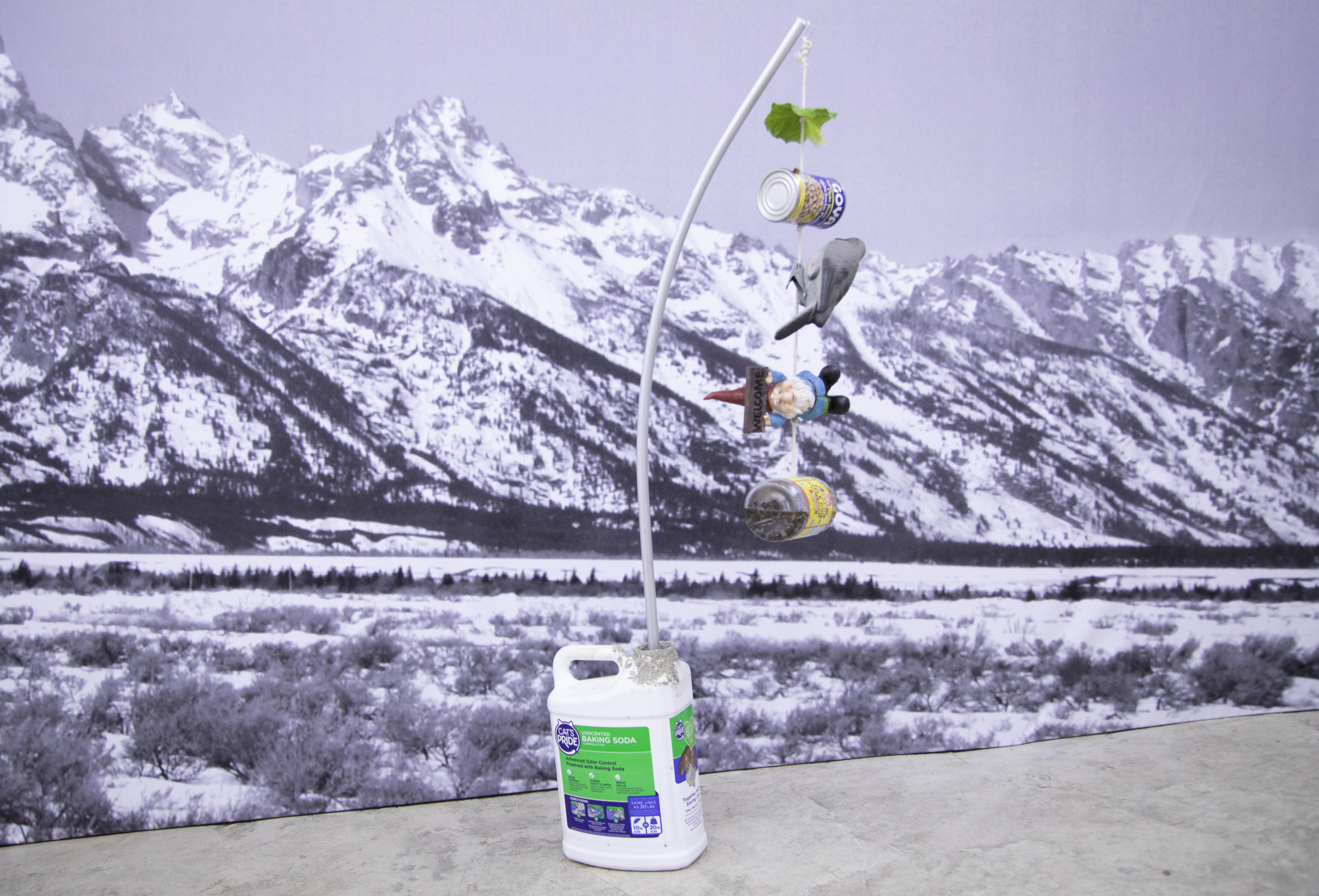 Andrea McGinty, Welcome Home, 2021
Andrea McGinty, Welcome Home, 2021artificial lettuce leaf, tin can, taxidermied yellow jackets, dove decoy, garden gnome, apple cider vinegar bottle, rusty nails, pigmented resin, clothesline, flag pole, cat litter container, cat litter, concrete

 Ben Dowell, NIB, 2014
Ben Dowell, NIB, 2014zinc cast shoebox

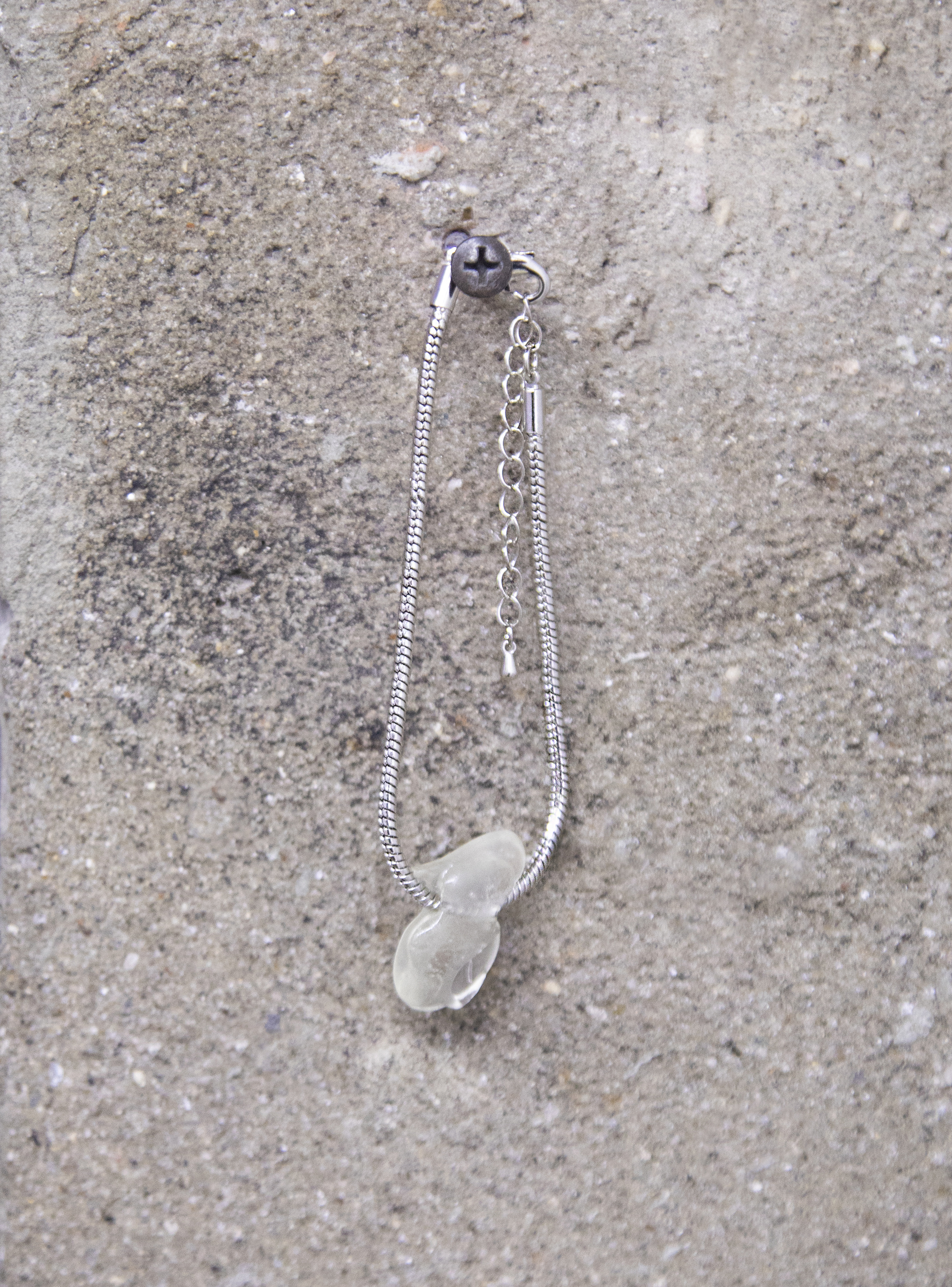 Siera Hyte, sugar bracelets, 2021
Siera Hyte, sugar bracelets, 2021sugar, bracelet, dimensions variable
 Amra Causevic, Model, 2020
Amra Causevic, Model, 2020wood, motorized turntable

 Trang Tran, Picnic, 2021
Trang Tran, Picnic, 2021burnt pine, burt douglas fir
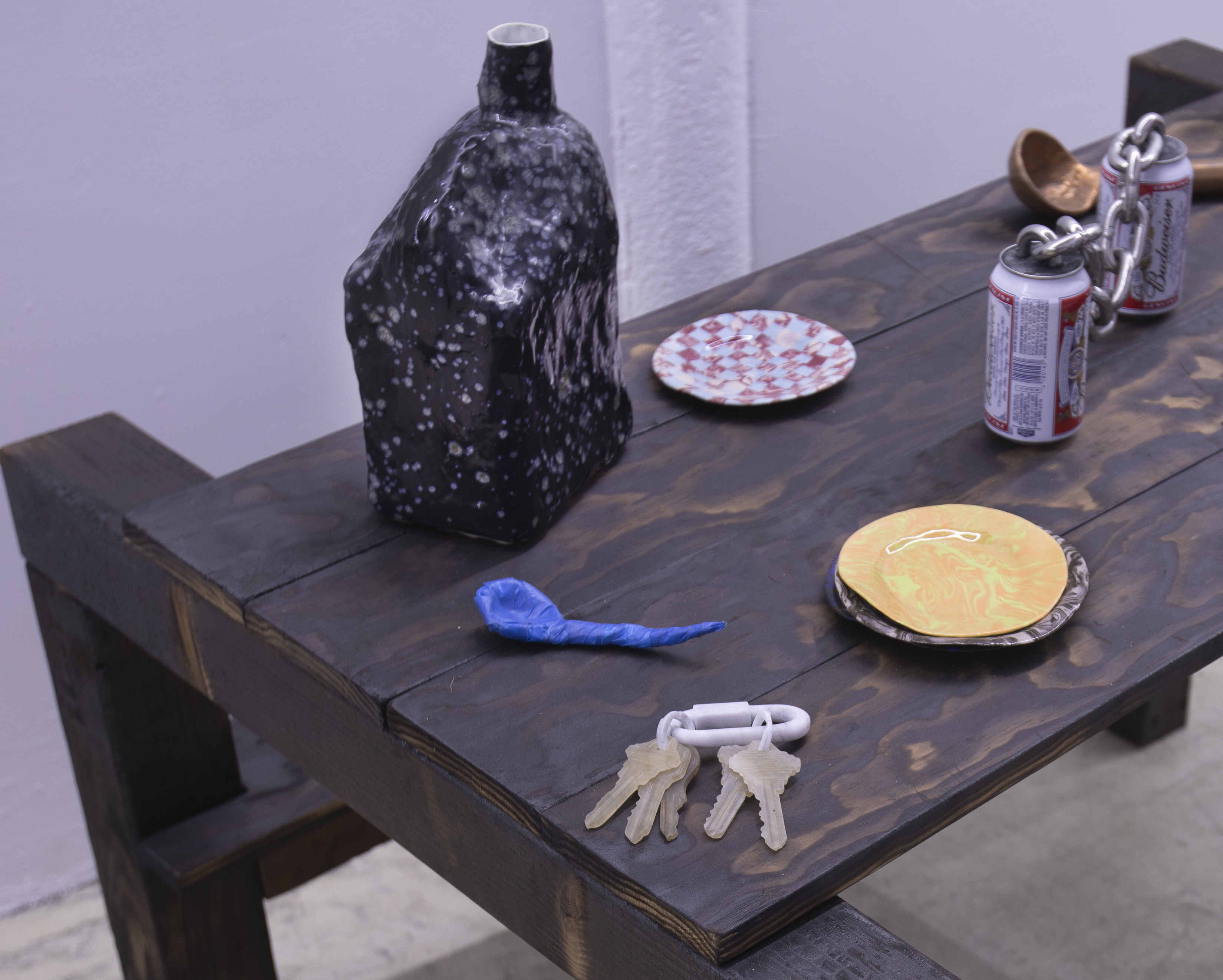
From left to right: LIPS (Loup Sarion & Charlotte vander Borght) Jug, 2020, ceramic, glaze; Max Lamb, [untitled spoon], 2021, tape; Chang Sujung, two rentals, 2020, alabaster; Isabel Rower, various small plates, 2020- 2021, porcelain, glaze

From left to right: Chen Chen & Kai Williams, Cement filled Budweiser nunchucks, 2011, Budweiser, cement, chain; Max Lamb, Nanocrystalline Copper Utensils, 2010, copper; Walter Mingledorf, plates for poison apples, 2021, lead; Imaan Saatr, magic tape vase, 2020, tape
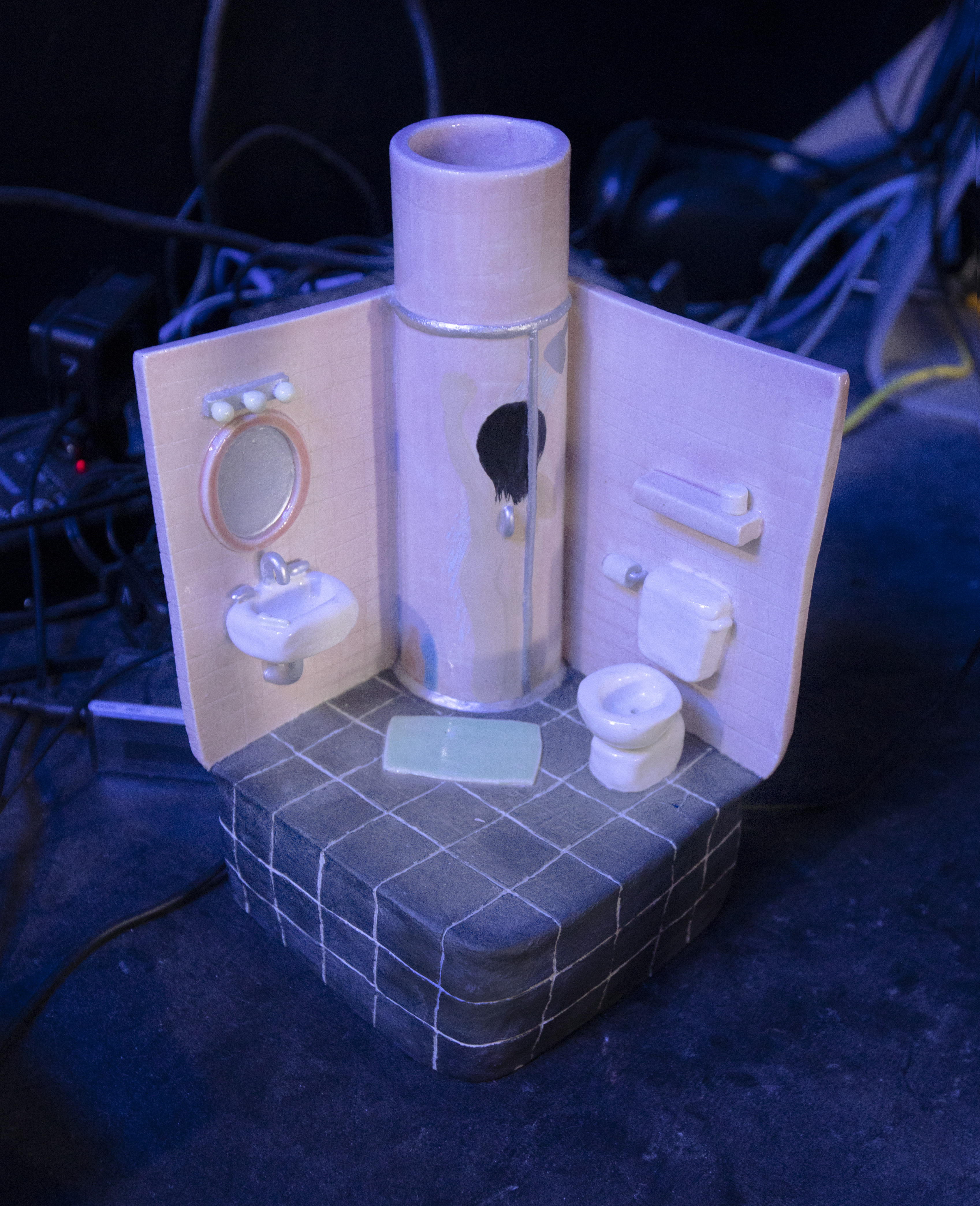 Ellen Pong, ceramic bong [installation view in Newtown Radio], 2021
Ellen Pong, ceramic bong [installation view in Newtown Radio], 2021
Anoushe’ Shojae-Chaghorvand, BAD BEHAVIOR, 2021
acrylic silkscreen ink, cotton shirt, RIT dye
 Andy Kincaid, Dream home. MVDR wall on island time [installation view in Newtown Radio], 2021
Andy Kincaid, Dream home. MVDR wall on island time [installation view in Newtown Radio], 2021palm tree, birds nest, model cabin, model snake (shortened), silicone, uranium ghost town pottery shard, paracord, bamboo, tape thread



“For the first time in my life I slept out in the open air. During the night it rained a little but not enough to wet us to any extent… splendid foreground material for pictures.”
Diary of Thomas Moran, Hayden Expedition, Yellowstone
An unbuilt dream home:
In 1937, Mrs. H set off to build her dream home on a cattle ranch on the Snake River near Wilson, Wyoming. Positioned under the majestic Teton Mountains, the ranch was the largest deed in the area and could produce its own food, water and electricity. For Mrs. H, the ranch was a holiday forever that possessed the ideals of westward expansion and the mathematical sublime.
Infatuated with the prevailing International Style, Mrs. H, through a family connection, commissioned architect Philip Goodwin and a Harvard Architecture School graduate student to build the home in the style of Le Corbusier. Bringing harmony to the conditions of a growing industrial landscape, the International Style dream home was a machine. Across America bore the dialectics of the modernist’s standardized blocks that stood in contradistinction to the landscape. At the time, Corbusier was interested in the relationship between ramps and hills; the experience of the ramp was an architectonic promenade; nature was dispossessed. “National parks are a secular society’s sacred places”, and for Mrs. H, this Teton home represented the ideals of an emerging modern life that was spreading across the west uninhibited by the changing topography.
Spanning a millstream that branched off of the river, the central feature of this dream home was a dining area that floated above the water with views of the mountains in the distance. The success of her dream home was based on the development of a newly organic -- that is, newly organized -- environment, and emphasized the boundary between human, narration and landscape.
After the construction of four concrete piers that would support the dining room above that arm of the Snake River, Mrs. H lost confidence in the young architects and turned to Alfred Barr, the director of MoMA, to find another architect. In 1937, internal divisions within the MoMA board of trustees centered around a debate as to which architect would build the next midtown New York museum space. Barr and Mrs. H supported architect Mies van der Rohe while Abby Rockefeller, a fellow trustee and Wyoming neighbor, supported Philip Goodwin. Since Mrs. H was having troubles with her dream home, Barr suggested bringing Mies onto the project as a way of getting him into the United States. Writing to Mies, Barr noted that “the house would be situated in the mountains of the west. The site is magnificent in its surroundings and the house itself would be fairly large. It would involve certain problems which I think would interest you.”
Mies van der Rohe, receiving the letter, realized that the project was an opportunity to escape interwar Germany and join his fellow stylists in the United States; this would be his first trip across the Atlantic. Mies left Germany with $4 in hand to meet Mrs. H in Paris where they boarded the RMS Berengaria for New York and upon arrival embarked on the transcontinental railroad for Wyoming.
At the ranch, Mies stayed at the “White Cabin” designed by Philip Goodwin in an International Style that synthesized the lodgepole vernacular of the Teton’s with an all white interior. He shared the cabin with American Gothic painter Grant Wood for several months.
The only concession Mies made to the aesthetics of the American West was to use wood to clad the home, for the first and only time in his career. Rather than using the preferred local lodgepole pine, Mies settled on cypress wood that needed to be transported from Louisiana. Mies did choose to use local fieldstone for the ground-level walls, the fireplace and central stairs.
By the following March, Mies was aboard the RMS Queen Mary returning to Germany. For two years, Mies attempted to restart the project, but after three rejected schemes, one of which included a redesign at a reduced scale and price, Mrs. H cancelled the construction of the dream house citing “economic reversals.” As the Cypress wood cladding journeyed across the country to Wyoming, the Snake River washed away all but the original four concrete piers. Perhaps it was that the project had doubled in cost, or perhaps it was the flood, but in the end this dream home forced the Modernists together under the mountains of the west.
Years later, another dream home, Poker Flats, Grand Teton National Park, Wyoming:
Donning cross country ski boots to leave his home as he has for the last six months since snow made the road impassable, artist Andy Kincaid ventured onto that ranch near the Snake River carrying with him a two-part, tin-cured silicone putty. Noticing the two remaining concrete piers standing over the river, Kincaid worked the putty into the facade, taking it’s impression with him. Packing the resulting mold in his suitcase with a second impression from his Poker Flats home, he carried these architectures to Brooklyn and on to International Waters. Kincaid is leaving Wyoming; no holiday is forever.



